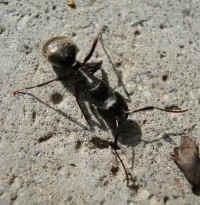
The hairs on the rear-end are the give-away that it is a Carpenter Ant. |
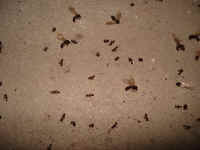
Picture of
Dead Carpenter Ants. You see workers and winged swarmers.
Of those winged ones Carpenter Ants; the big ones are females and the small ones are
males. |

These Carpenter Ants are guarding the entry to the colony. Notice the
sills are Pressure-Treated wood.
Carpenter Ants don't care, they don't eat the wood, they
only chew it apart for a place to live. |
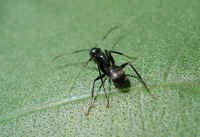
Picture of
Carpenter Ants in the wild often travel on plants to get food from
Aphids or plant saps.
If you see many ants traveling on a tree then they are colonized very
close by. |
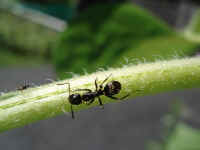
Picture of
Carpenter Ant. |

Picture of
Chewings dropped from a Carpenter Ant colony above.

Picture of
Close-up of that pile of frass they dropped down.
|

Picture of
Carpenter Ant trail. |
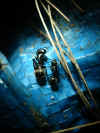
Carpenter Ants are mostly active at night.
|

Picture of
Carpenter Ant |
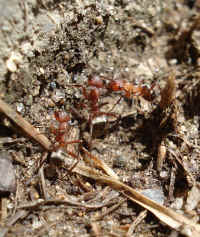
Not all Carpenter Ants are all black. These are Carpenter Ants too.
Look for the small hairs on the rear section, this will tell if they are Carpenter
Ants. |
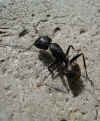
Picture of
Carpenter Ant |

The hairs on the rear-end are the indication that it is a Carpenter Ant. |

Unlike many other ants, Carpenter Ants vary in size. They don't
have to be big ants. Carpenter Ants do not have to have wings either.
|

We found a Carpenter Ant colony. |
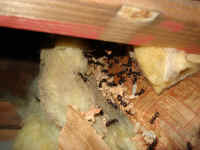
Carpenter Ants with Pupa / Larva. |
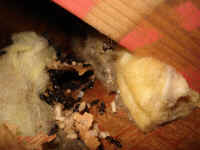
Picture of
Carpenter Ants with Pupa / Larva. |

Picture of
Carpenter Ants with Pupa / Larva. |

Picture of
Carpenter Ants with Pupa. |
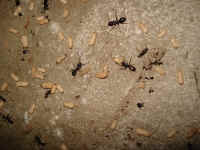
Picture of
Carpenter Ants with Pupa / Larva. |
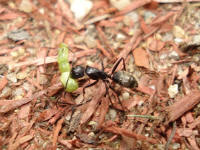
A picture of a carpenter ant carrying a small caterpillar back to the
colony. The ants need this kind of food for protein when a lot of ant eggs
are being laid. |
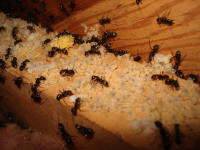
Close-up picture of a Carpenter Ant Colony. Obviously this ant colony
is going to have a big population increase. This may be going on inside your
structure somewhere. |